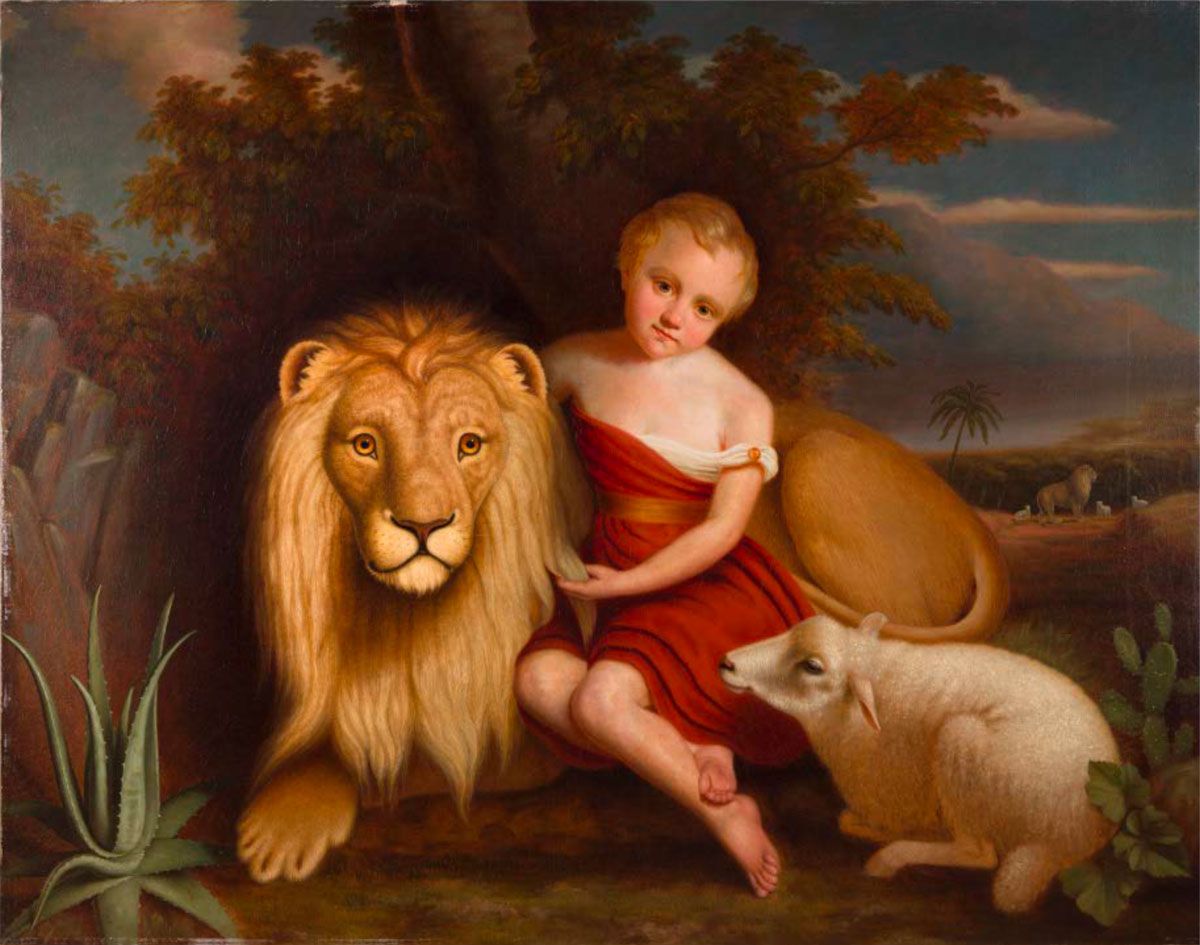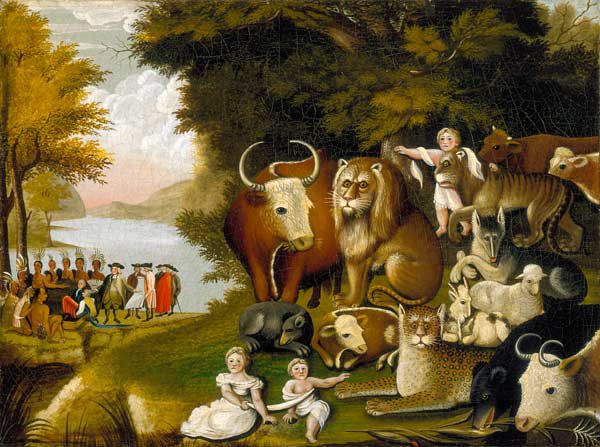To interactively explore this work, tap or click on on the artist’s name, the title, and on features in the work itself.
Oil on canvas, 31.1 x 38.1 in., McMullen Museum of Art, Boston College, Gift of Alexandria & Michael N. Altman P’22, 2019.1
Tap or click on points of interest in the image to learn more ➡

Child
The “little child” is an example of a nineteenth-century idealized portrait—not a likeness of a particular person but an archetype based on conventional ideas of perfection. Raphael was a favorite model for painters of the era, and this child’s face resembles the Renaissance master’s depictions of putti and other infants. The child’s fanciful garments are more theatrical than historic.
Lion
The wonderfully expressive animals are not at all in scale to the central child. The lion is nonetheless anatomically accurate, indicating the painter had a model to work from. While today lions are native to Sub-Saharan Africa, in ancient times they spread throughout the Middle East and are prominent in Mesopotamian art.
Lion and lambs
In the background, another lion socializes with several lambs; these are in correct scale to one another.
Trees
These broad, leafy trees are painted schematically after the style of seventeenth–eighteenth-century European landscape painting—more specifically, influential Dutch artists such as Jacob van Ruisdael (1628–82). The painterly leaves are unvariegated and unidentifiable, in contrast to the highly detailed and specific plants in the foreground.
Aloe
The familiar succulent Aloe vera is native to the Arabian Peninsula, although by the nineteenth century it was cultivated worldwide for the healing and soothing quality of its gel.
Lamb
The delicate, pear-shaped lamb appears to be a Merino, a breed prized for the softness of its wool, originally from Spain.
Grapes
In front of the lamb are grape leaves. Grapes and vineyards are symbols throughout the Book of Isaiah, with a central passage being the “Song of the Vineyard” (5:1–7), an allegory about God’s relationship with Judah. For Christians, wine is one of the two elements of the Eucharist.
Cactus
This cactus is a member of the genus Opuntia commonly called the prickly pear. It is native to arid regions of the Americas, and its presence in this painting contributes to the work’s eclectic mixture of biomes.

